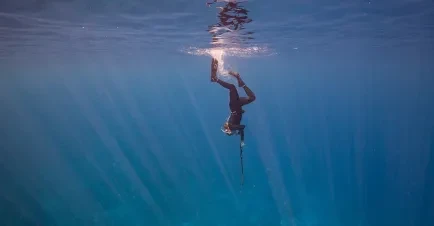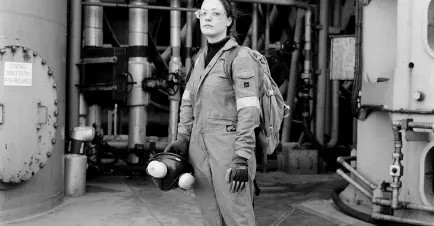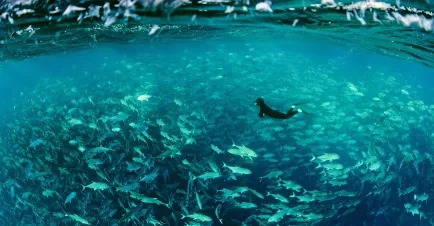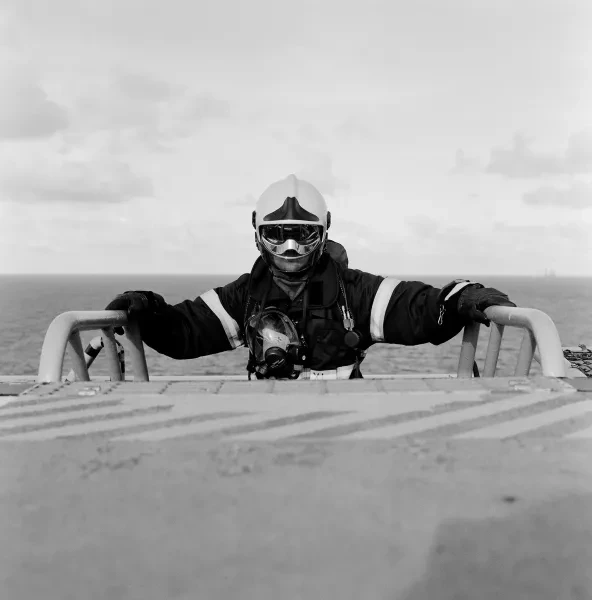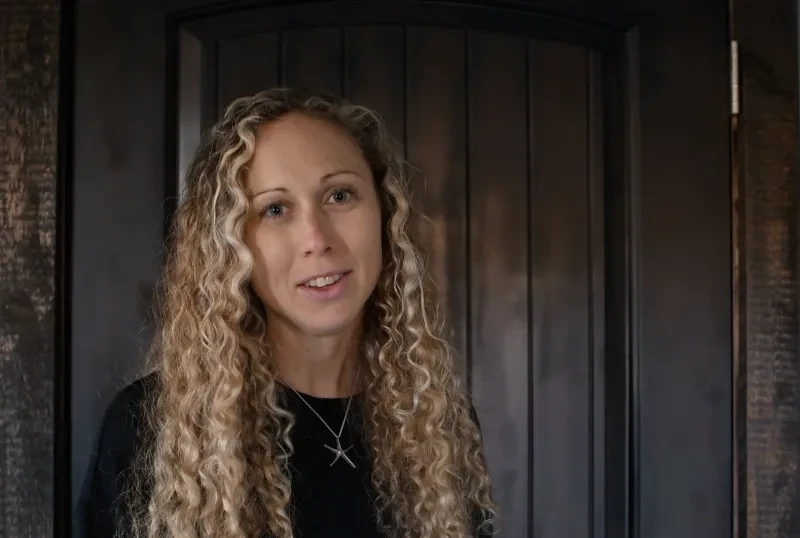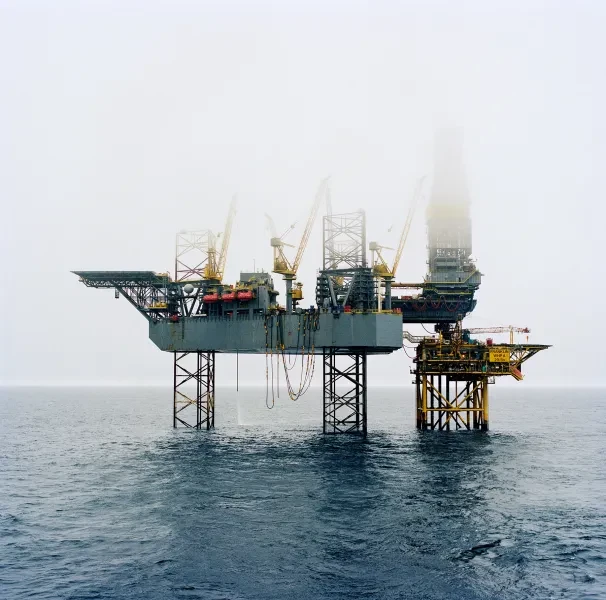
From the large-scale panoramic to the intensely intimate, Exposure: Lives at Sea captured both the extreme environments and everyday sights of our seas and oceans today.
Bringing together photography taken around the world, from the reefs of Mexico to the isolation of Antarctica, this free exhibition showed us the myriad ways life can be spent at sea.
See just some of the stunning images that were on show, and learn more about the photographers featured in the exhibition.
(All photographs by kind permission of the artists).
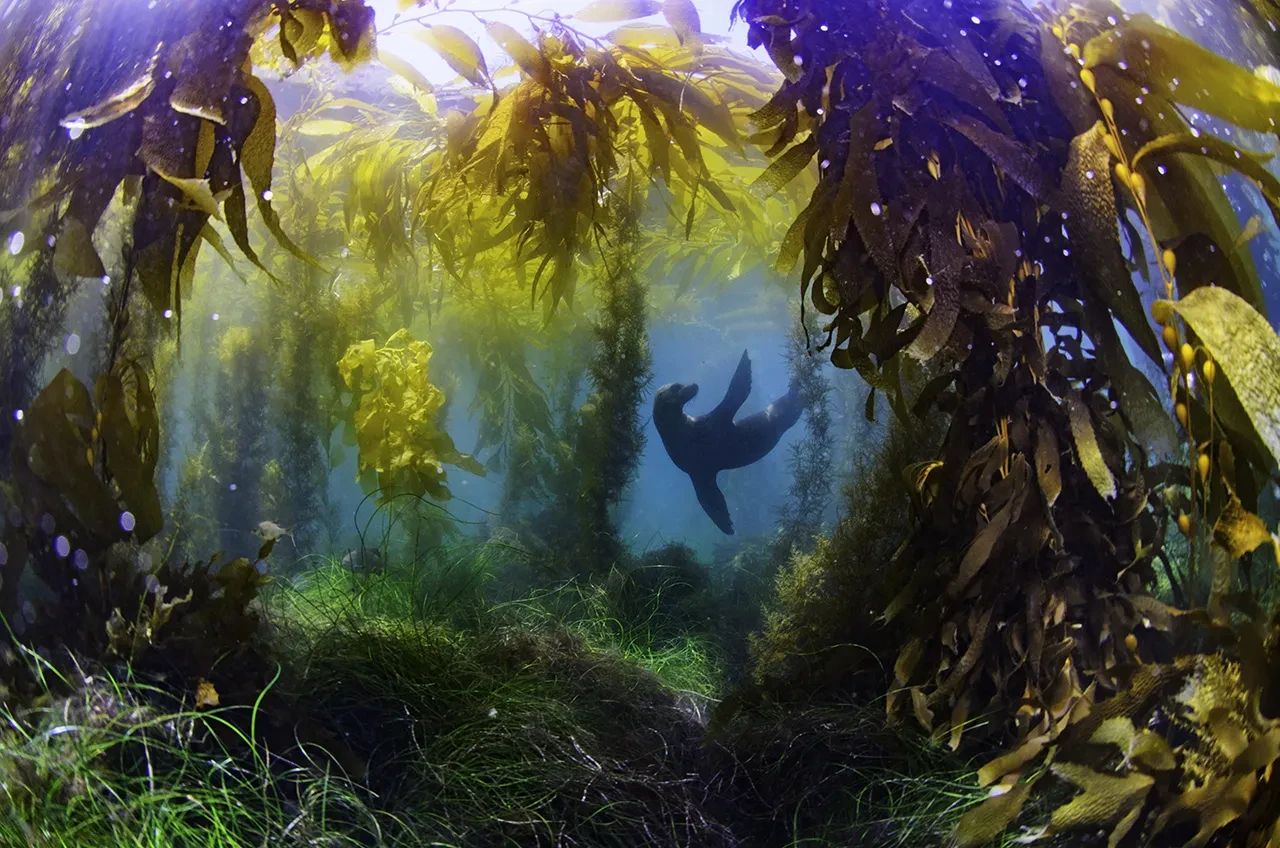
Playground
© Octavio Aburto
A marine ecologist and National Geographic explorer and photographer, Octavio Aburto has been photographing marine ecosystems off the coastal waters of Mexico since 1994.
Aburto’s photographs document the vital changes local communities in Mexico have made to conserve ocean resources. Despite the communities’ efforts, the effects of climate change mean these delicate ecosystems remain under threat.
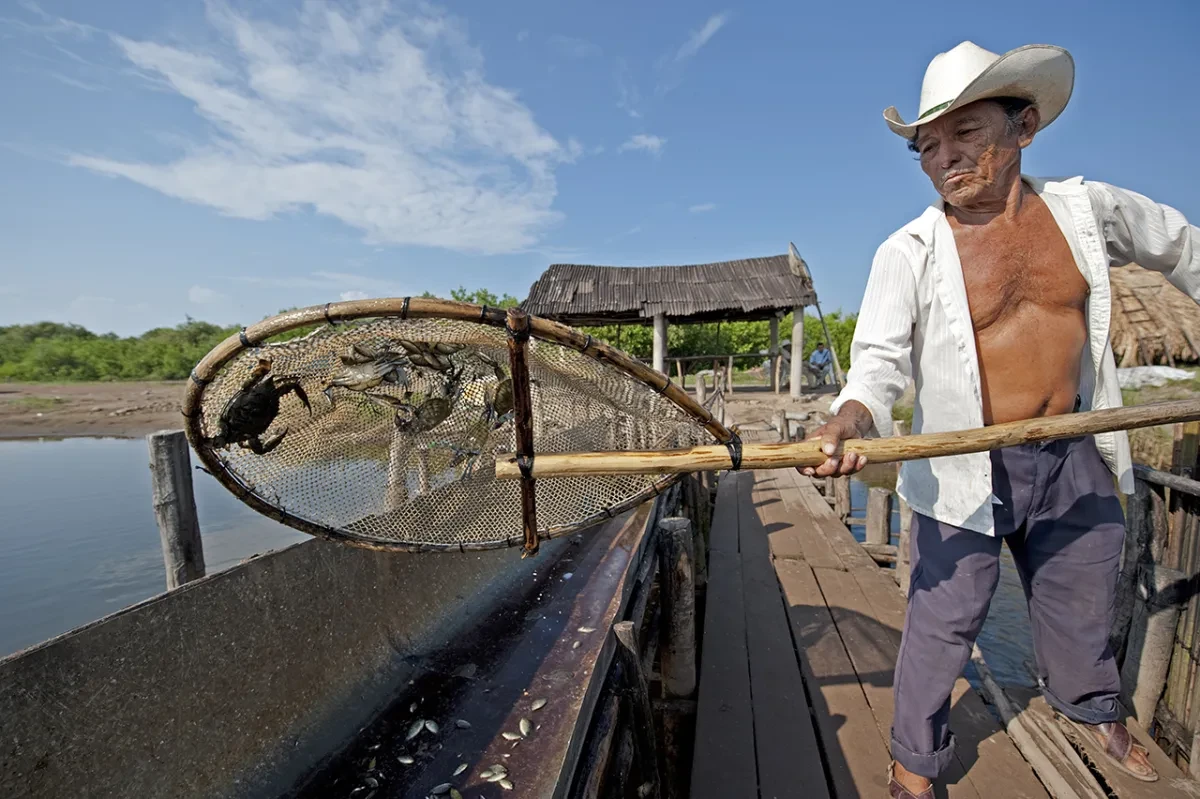
Fishing with Tapos
© Octavio Aburto
"Decision-makers can be inspired to make changes if they understand the scientific results we produce. Photography is a very good way to convince them to change in favour of the environment." - Dr Octavio Aburto
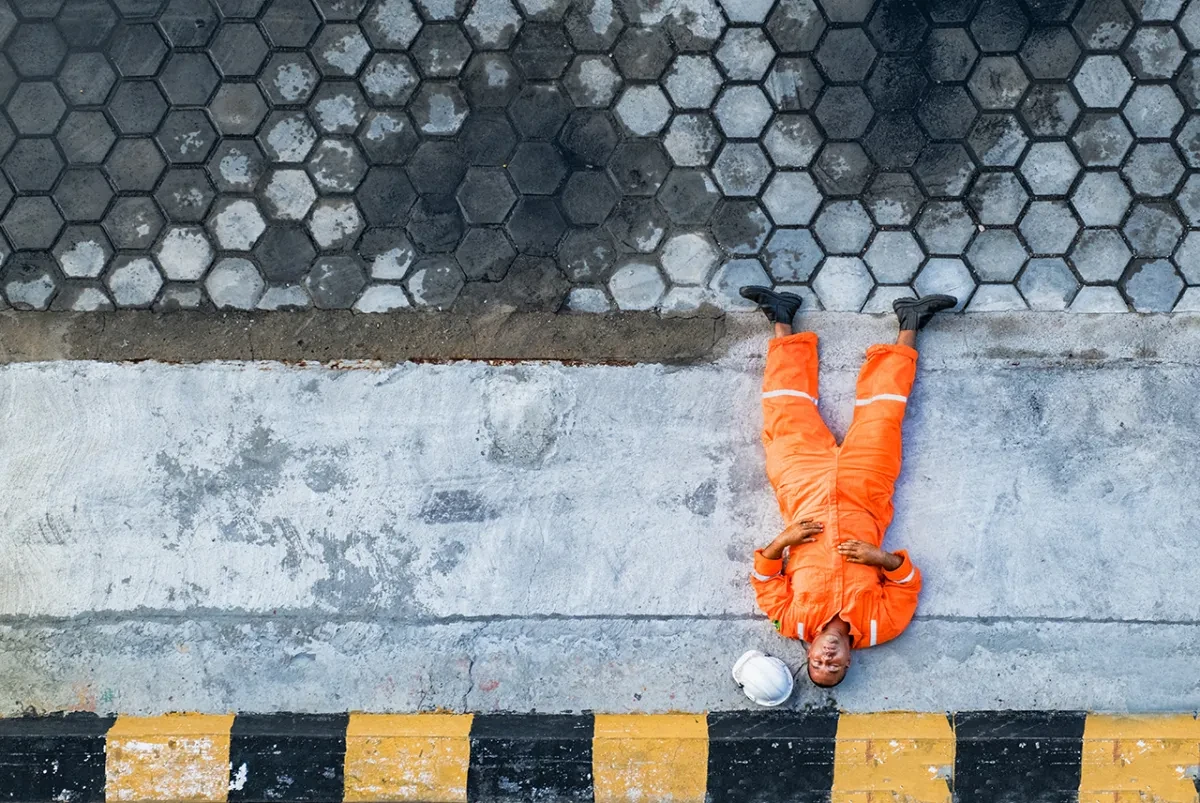
Fallen
© Cezar Gabriel
"If this pandemic showed us anything, it's how little we matter for some, and how much for others." - Cezar Gabriel

Enclosed Space
© Cezar Gabriel
Chief engineer and photographer Cezar Gabriel has worked at sea for over 20 years, living on remote oil tankers. He began taking photos of life on board to raise awareness of the physical and mental challenges faced by seafarers.
Gabriel's photographs serve as a reminder that seafarers are fundamental to supporting daily life in the UK, with 95% of all imports and exports transported by ship. During the COVID-19 pandemic, hundreds of thousands of seafarers became stranded. Many were stuck on ships unable to dock, while others were unable to travel to join their ships.
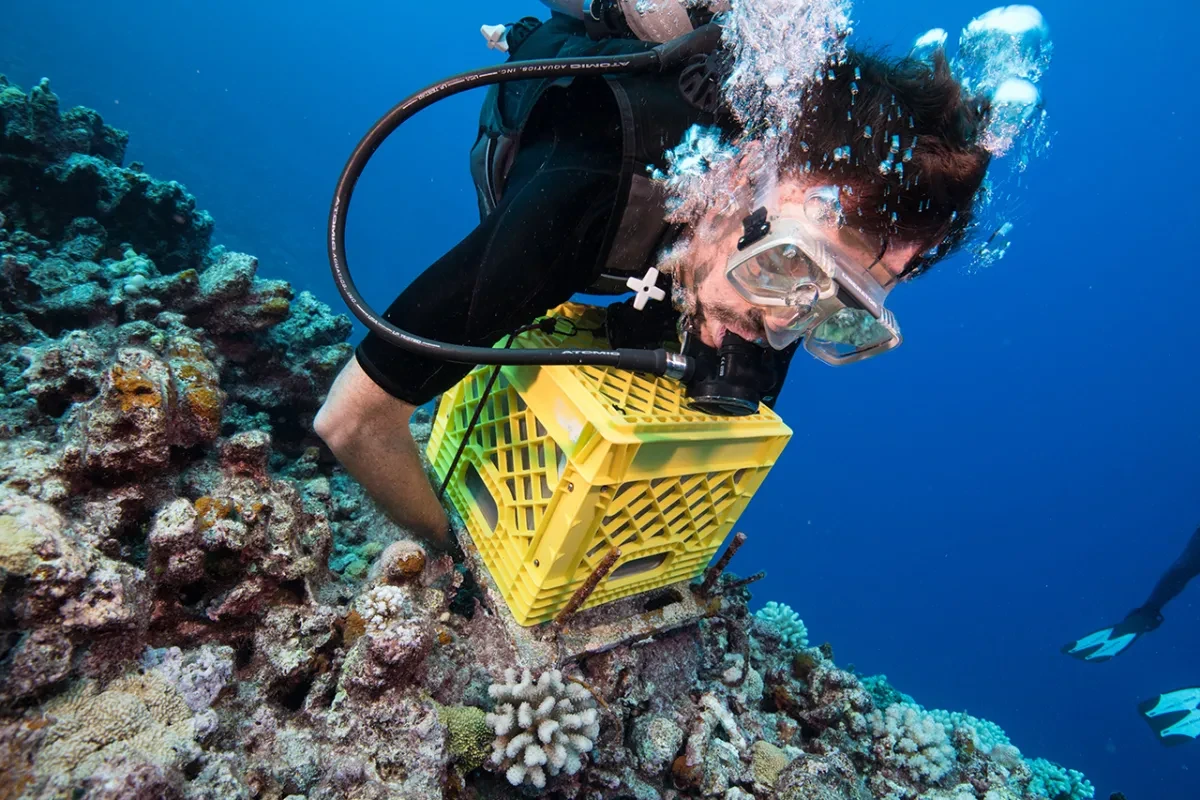
Precious Cargo
© Jennifer Adler
"Photography can bring emotion and connection to science and statistics. It can communicate research that wouldn’t otherwise leave the pages of a peer-reviewed journal." - Dr Jennifer Adler
Find out more about her work in the STEM field and the effects of climate change she is witnessing every day here:
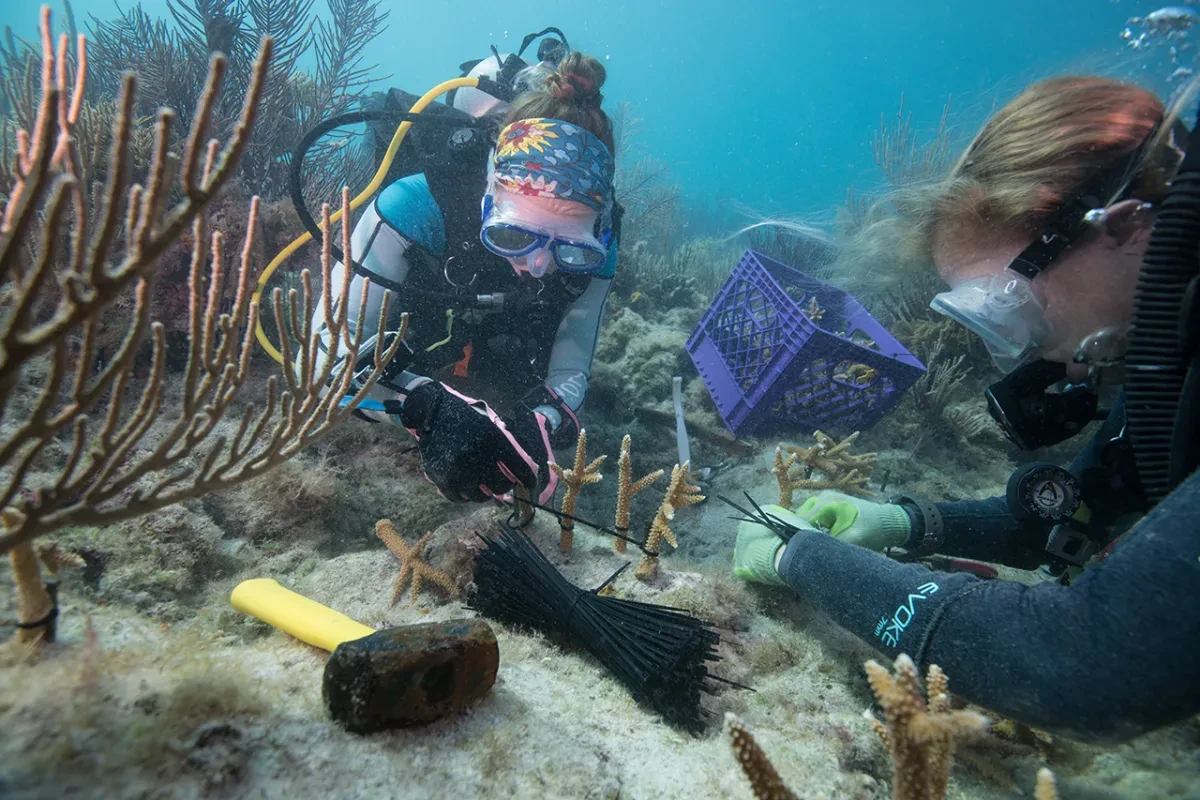
Underwater Gardeners
By kind permission of artist and made possible by the National Geographic Society © Jennifer Adler
Dr Jennifer Adler is a conservation photographer and underwater journalist, who dives deep into an uncharted world beneath the surface to communicate conservation and science.
Coral reefs are one of the most diverse ecosystems in the world, but also one of the most threatened. Dr Adler's images reveal the feats researchers accomplish as they navigate underwater realms, assessing the health of our oceans to establish how best we can protect them.
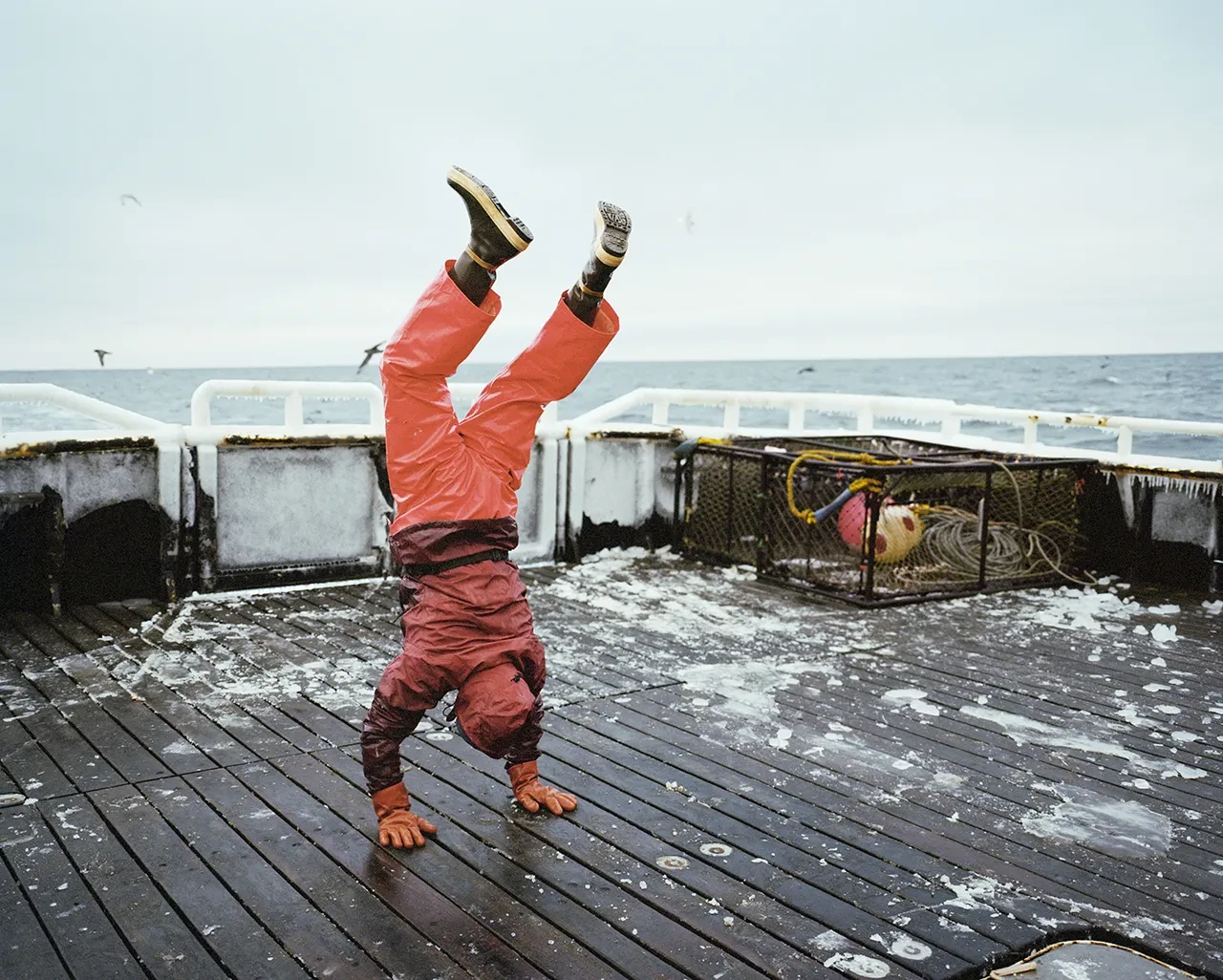
Handstand
© Corey Arnold
A science-based management approach has preserved healthy fish stocks throughout Alaska. However, abnormalities in ocean temperatures related to climate change pose a challenge for the future.
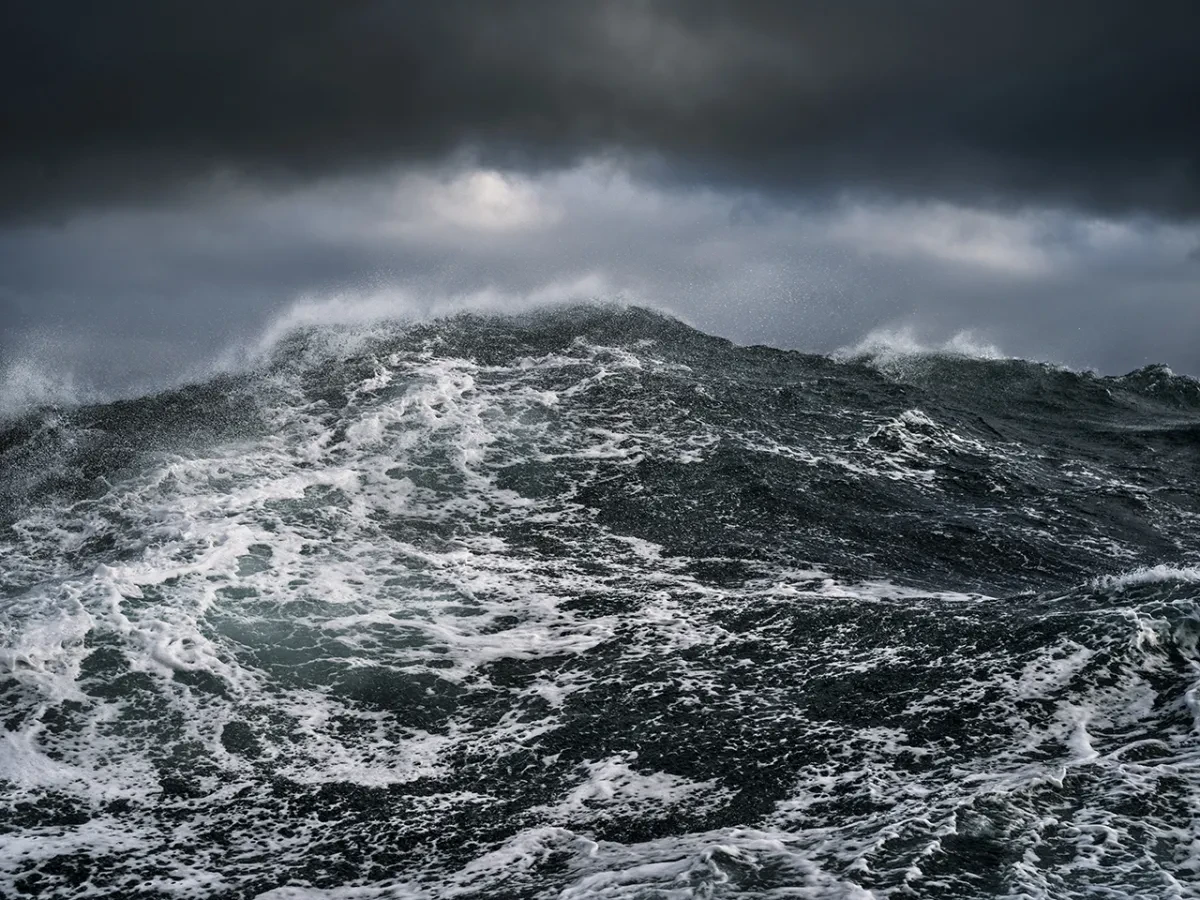
Dark Sea
© Corey Arnold
A photographer and commercial fisher, Corey Arnold documents the Alaskan sea and the people who work on its waters.
Commercial fishing remains one of the deadliest occupations in the world and Alaskan fishers work in an extremely hostile environment, with volatile winds, huge waves, freezing temperatures and long fishing seasons spent far from home.
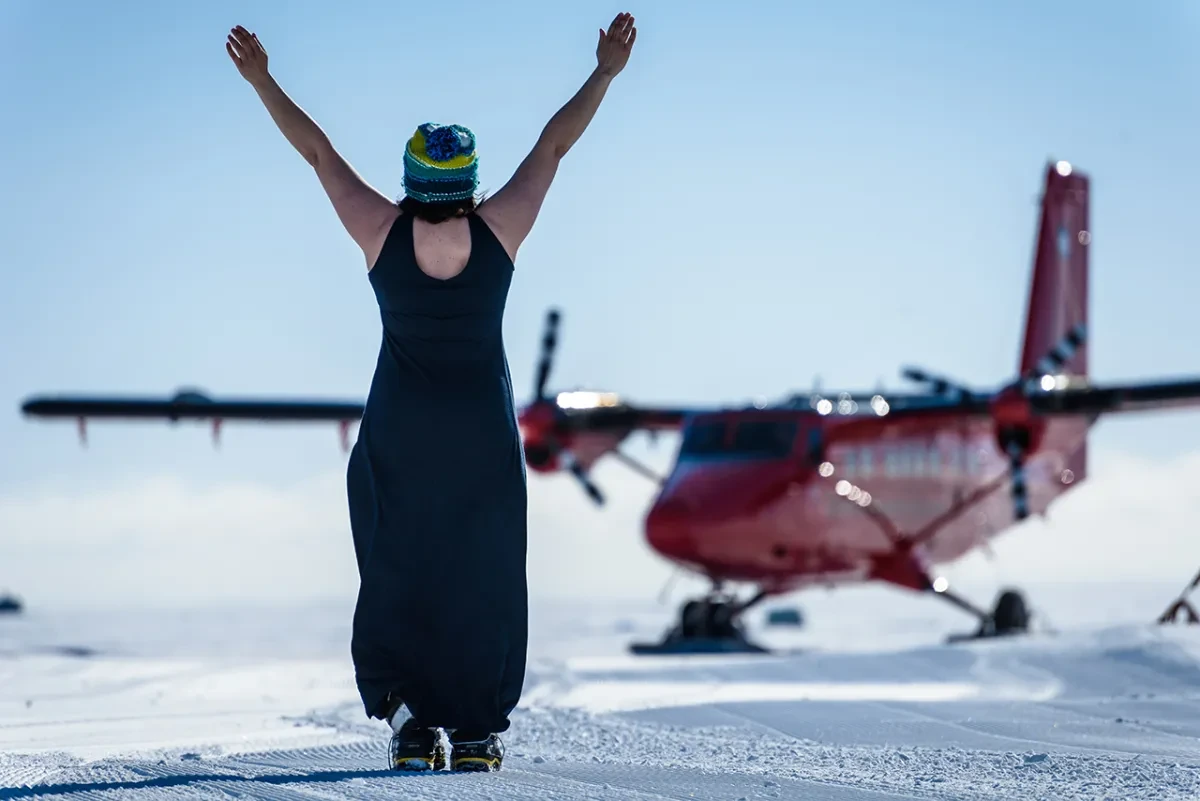
Fakemas Flight
© Michal Krzysztofowicz
Working for 15 months as a Data Manager at the British Antarctic Survey's Halley IV Research Station, Michal Krzysztofowicz documented his experience by taking a photo every day for a year.
His work captures the isolation of working in one of the most remote workplaces on Earth, inaccessible by sea, land or air. Once the supply ships leave in the winter, the 13 researchers based at the station are left alone for eight months.
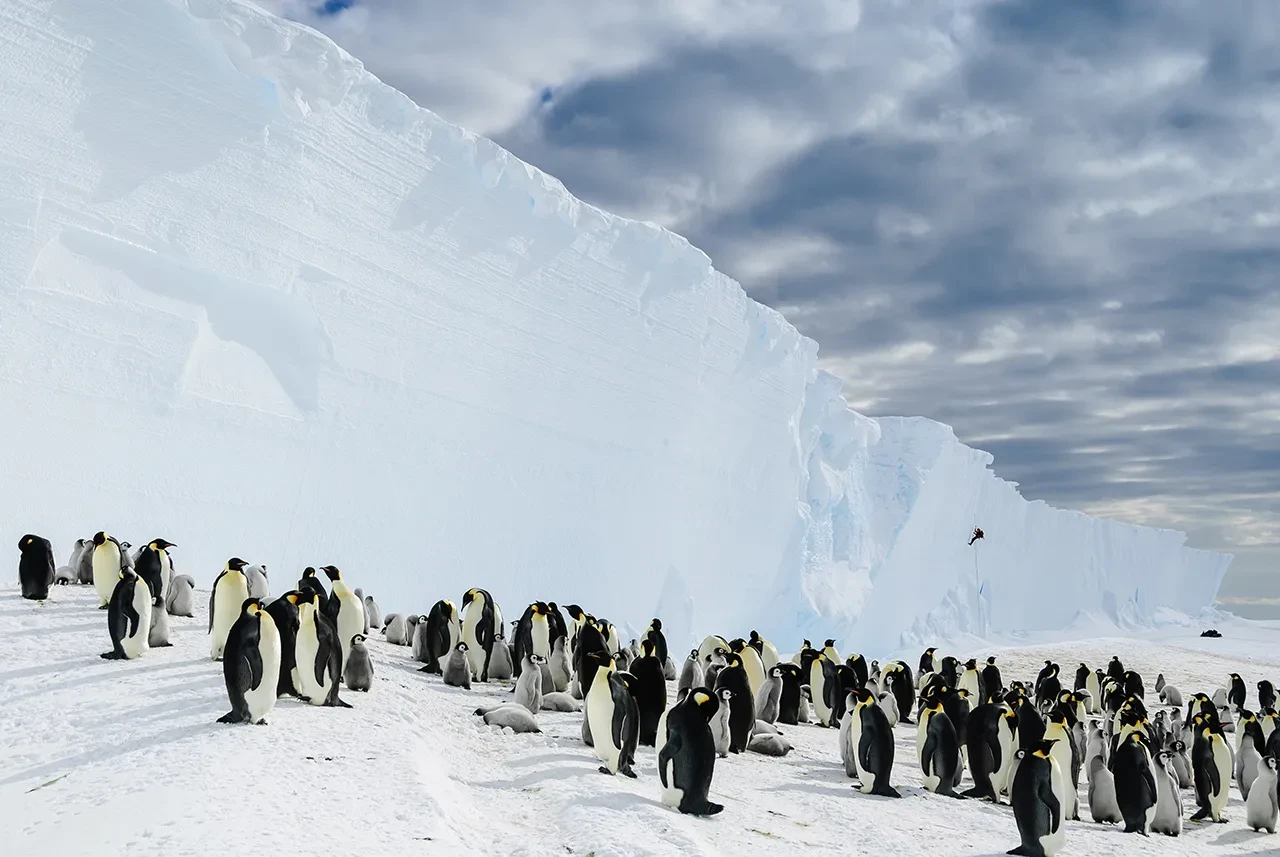
A neighbourly visit to the penguins
© Michal Krzysztofowicz
Krzysztofowicz's photographs capture a breath-taking Antarctic world, but also a challenging one for humans. As winter progresses, the hours of darkness increase and the temperature drops to -56°C.
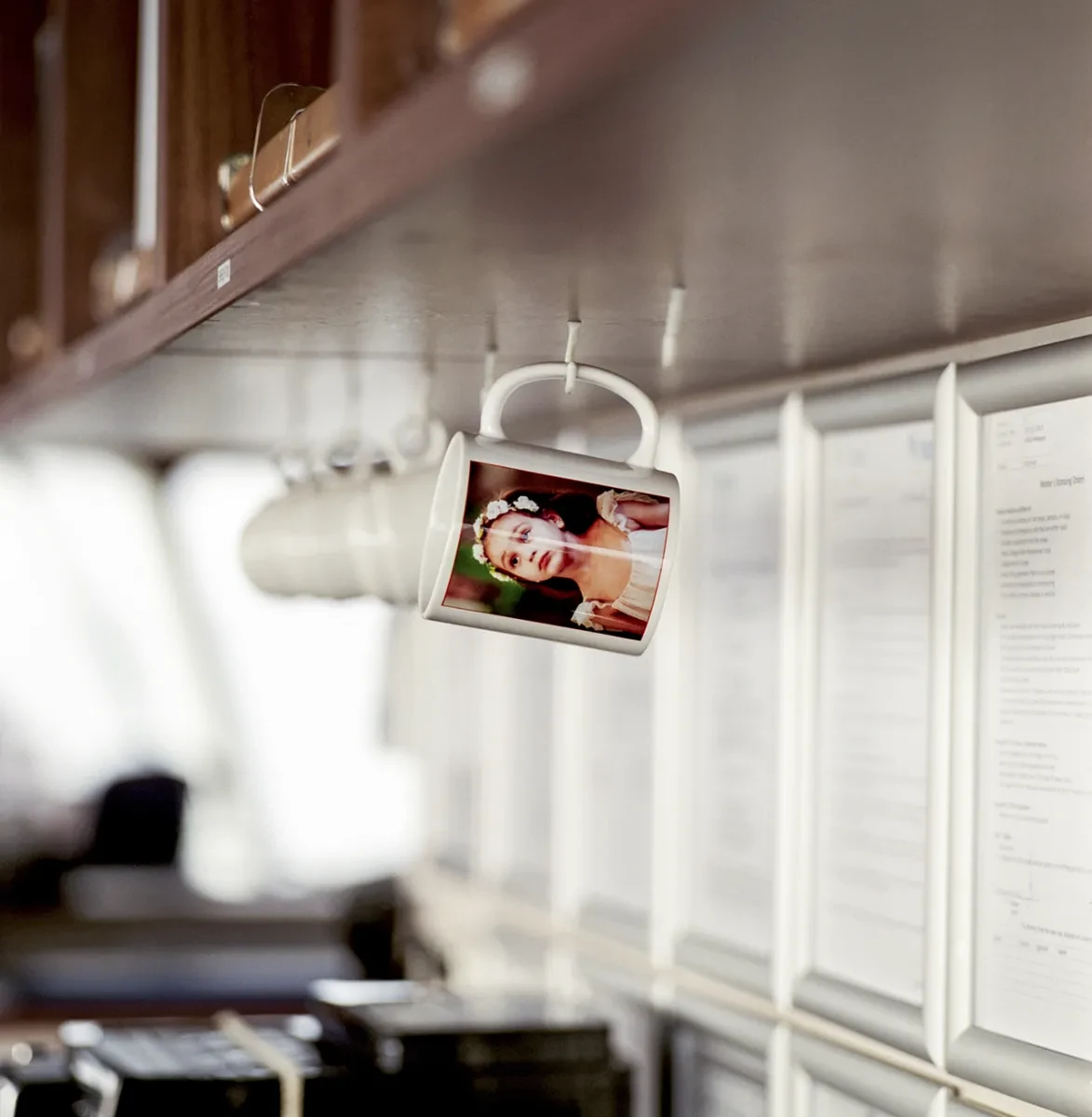
Dimitar’s Cup
© Peter Iain Campbell
Peter Iain Campbell is a commercial photographer who, in order to document life in the offshore oil and gas industry, specifically trained to work as a drilling rig worker in the North Sea.
Iain Campbell's work reveals the human stories of people working in these challenging environments through evocative portraits and isolated shots of the oil rigs they call home.

Irene Lopez Rodriguez
© Peter Iain Campbell
"There’s an underlying feeling of isolation, volatility and danger offshore. The confined physical environment can be claustrophobic, the natural elements harsh and brutal." - Peter Iain Campbell
